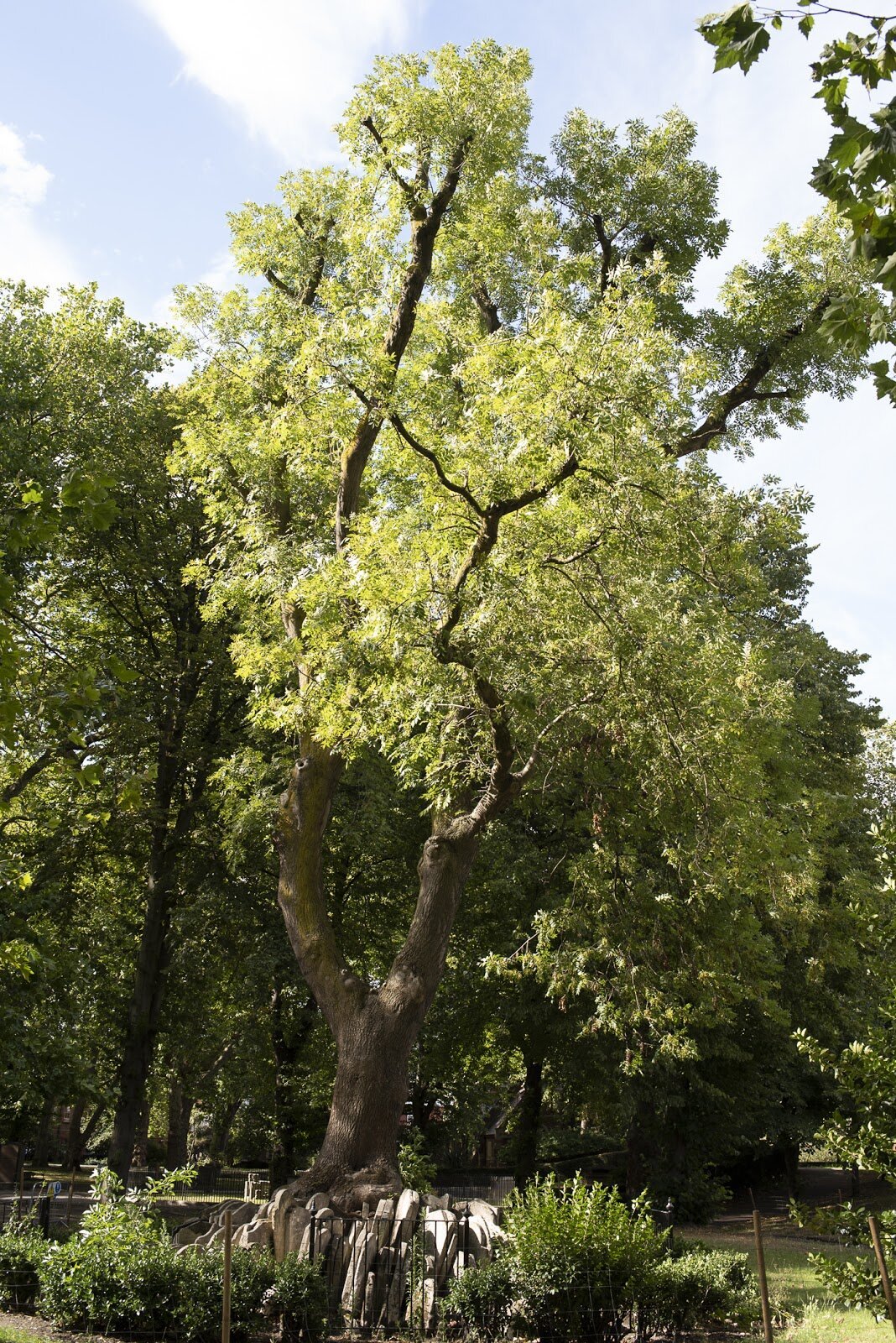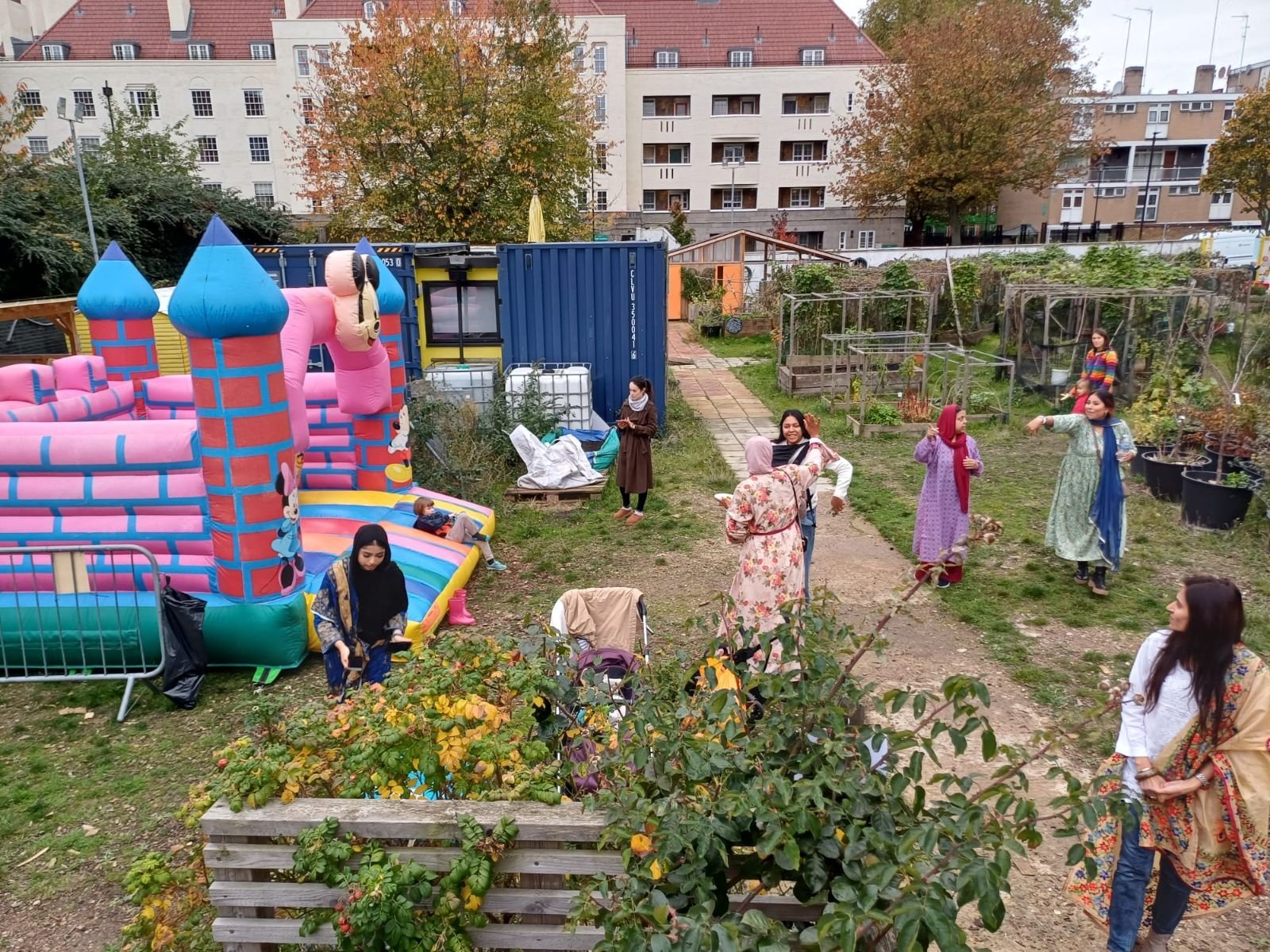Voices of the Earth - ash
Standing tall and proud in St Pancras Gardens, Jane Riddiford encounters the Ash, which is the sixth plant in our Voices of the Earth pantheon. Here, Jane shares what happened when a young man paid attention to a story that Ash re- kindled in him. At the end of the blog you can listen to an audio piece in which Dontae Jacobs, describes how Ash invited him to help grow a new story.
With rapid changes in the cityscape of King’s Cross, it feels especially good to step into St Pancras Church yard; a small pocket of graves and green that is anchored in an unchanging kind of time. The silence and the power of the place is palpable. This former pagan site, now the gardens of an early Christian church, is a place of stillness and stories; old stories about Boudica, the River Fleet and Joseph of Aramathea, Mary Wollstencroft and the rights of woman, her daughter Mary Shelly (who wrote Frankenstein), and Charles Dickens and the workhouses that once surrounded the gardens. For the Voices of the Earth Fellows, it has been a place for the making of new stories found in the branches of the trees that find a home here. The largest of all is the ash, known to many visitors as the Hardy Tree.
It’s hard to believe now that for years I couldn’t tell the difference between an ash and the small red-berried rowan. The compound leaves of both trees are made of opposite leaflets and their branches were carried as staffs and spears in the legends of old, but that’s as far as the similarities go. As the name excelsior indicates, ash is tall and lofty, reaching skywards, her bark is grey, more smooth than rough and in the axil of her leaves are the buds, the most identifying feature of all. New buds are dark and velvety, like tiny, perfectly-formed hooves of deer.
It is said that the old stories were half made by humans and half by the earth. Is it any wonder then that there are four stags that harbour under the branches of the great ash Yggdrasil, the world tree of Norse mythology? When you look carefully you can see that her leaves turn upwards like the feathered wing of an eagle, and in the legend of Yggdrasil an eagle is perched in her crown is perched an eagle. Yggdrasil’s three great roots spread the whole way around the world connecting all things; one in the realm of water, one in the earth and one in the air. My heart skipped a beat when I heard from Dontae, one of the young Voices of the Earth Fellows, that when the world tree dies this universal order will wither away. At the time I was looking at the graves that encircle the base of the Hardy Tree; a poignant reminder perhaps that across the UK the survival of many ash trees are threatened by a pathogen known as Chalara or ash dieback.
The ash has a number of healing properties but most of all she teaches us that patience is key. Myths and legends like Yggdrasil took thousands of years to grow and spread to other parts of the world. Rather than instant pop up park landscapes, it is amidst the gentle seeding and growing of trees in local neighbourhoods that new and patient stories, so needed in our times, can grow. During the Voices of the Earth journey we found solace, strength and hope for a different world in the slow undulating and healing rhythms of the trees of St Pancras Churchyard. As we moved amidst the trees a sense of trust grew between us.
Local resident and 18 year Dontae Jacobs reflects this in a monologue he shared about his own story woven into the legend of Yggdrasil. As with the daisy and the story of Demeter and Persephone described in the last chapter, the fellows worked with Naomi Frederick of Complicité to produce a physical theatre piece which brought Dontae’s story to life. Listen here to Dontae Jacobs’ story of what happened when he encountered the Ash in St Pancras Churchyard.
This sound design, by Complicité sound designer Daniel Balfour, was created out of the work of children, young people and adults involved in the Voices of the Earth Project.
Each of the seven Voices of the Earth audio pieces were created as an invitation for you to spend time in Camden’s Green Spaces, listening to nature’s voices. Download the audio map here.









Meet our second cohort of earth build trainees! Their focus has been on all things wood, including green woodworking and the timber construction of the kitchen. They have learned on the job, while working on our sustainable natural build construction project to create our first permanent community garden, at the #TriangleSite.